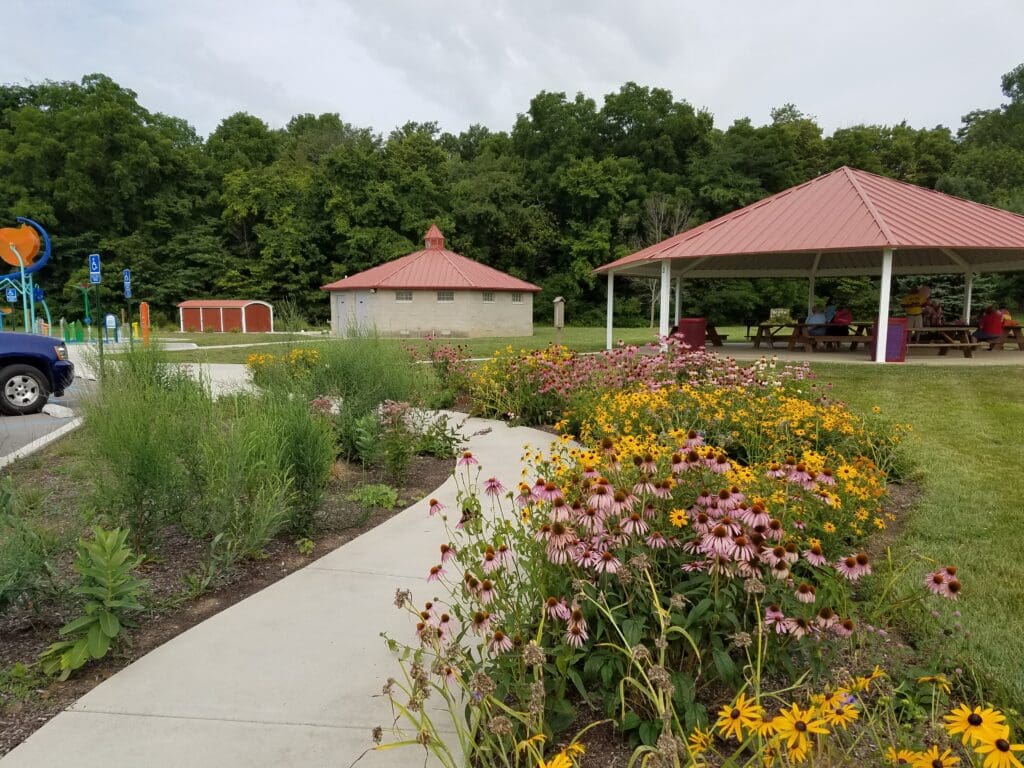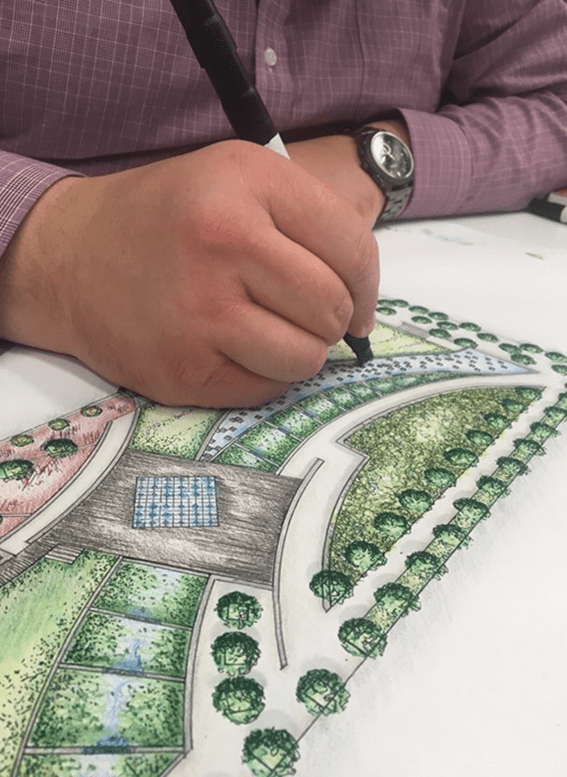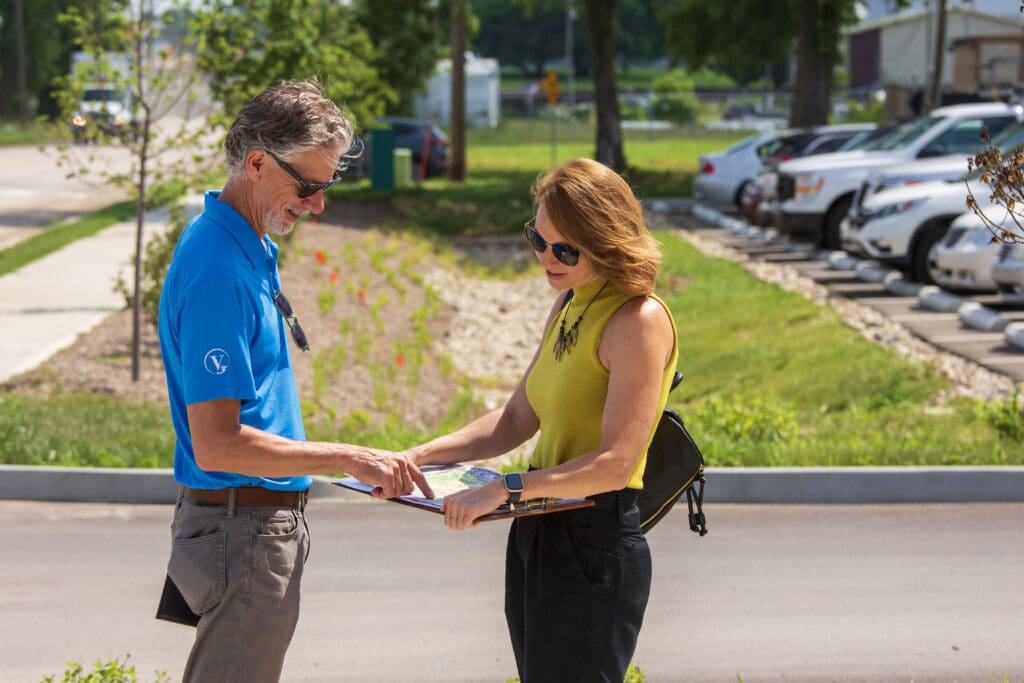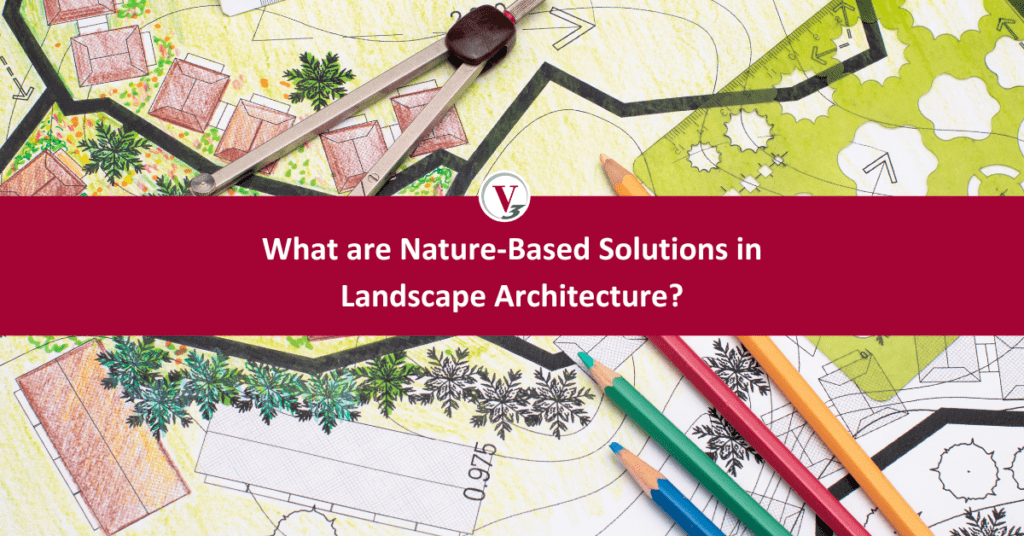V3’s landscape architects strive to connect people with nature and each other, using a variety of environmentally friendly design techniques to balance the needs of people and the planet. Learn more about how nature-based solutions are implemented by our landscape architects, and why this sustainable approach is more important than ever.

What are nature-based solutions?
“Nature-based solutions” is an environmentally focused approach to solving community and ecological challenges. First coined by the World Bank in 2008, this term applies to the use and understanding of natural elements and climate patterns to create holistic solutions that benefit all.
The realities of climate change have made nature-based solutions more important than ever. By working with the land, not against it, community builders can actively address environmental concerns and pivot towards greener, healthier futures.
Nature-based solutions are used to target challenges such as:
- Climate change
- Natural disaster mitigation
- Water security
- Biodiversity loss
- Promoting healthy communities
Landscape architects utilize nature-based solutions to create clean, thriving environments benefiting both people and the planet. These professionals—along with environmental engineers, ecologists, and other environmental scientists—are passionate about finding greener solutions to today’s community challenges.
Landscape architecture can strengthen the environment by purposefully incorporating native elements into the planning, design, and implementation of new spaces. Working with local habitats promotes the health of regional plant and animal species and provides meaningful solutions to residents’ surroundings.

“V3 landscape architects utilize nature-based solutions in order to minimize development impacts, enhance the resilience of local ecological systems, and bring people closer to those natural systems which educates the public about their value and improves the quality of life in their communities.“
Don Staley, PLA, LEED AP
Designing with nature-based solutions

Utilizing nature-based solutions to address landscape architecture challenges is a major focus for today’s professionals, especially here at V3. There are myriad ways to design with nature-based solutions, both in urban and rural environments.
In urban areas, landscape architects use green infrastructure: the strategic use of natural systems to manage infrastructure challenges within the built world. This intentional approach weaves together systems of plants, soils, and other environmentally beneficial features amongst a city’s concrete and steel to add beauty, biodiversity, improved air quality, cleaner water, and more.
In parks and other large open spaces, landscape architects look for ways to bring people to preserved and enhanced native plant and wildlife communities. Wetland preservation, for example, is crucial for reducing flooding, absorbing stormwater, and supplying fresh water and habitat to local ecosystems. Bringing people to these environments creates healthier living for all.
Examples of nature-based solutions in landscape architecture include:
- Rain gardens or bioswales: Commonly placed along curbs, rain gardens are functional, aesthetically pleasing planting areas that collect and slow stormwater runoff to help keep sidewalks and streets clear of flooding and waterways free of pollutants.
- Green roofs or rooftop gardens: Often found atop office buildings, green roofs use plants to cover an otherwise grey space. Rooftop gardens reduce building energy costs, filter, and slow rainwater runoff, and provide habitat.
- Permeable pavements: These pavers allow rainwater to infiltrate into the ground instead of rapidly flowing through pipes to our waterways. They are strategically placed to reduce flooding and improve water quality. Permeable pavers also delay ice accumulation, reducing safety issues.
- Green streets: Lining roadways and alleys with trees, planter boxes, and bioswales helps filter and slow stormwater runoff, provides cooling shade, and beautifies the community.
Explore how we designed with nature-based solutions in Riverside Adventure Park.
What is the difference between landscape architecture, ecological engineering, and natural resource science?
Landscape architects, ecological engineers, and natural resource scientists all work to bring people to clean environments suitable for healthy living, yet each discipline focuses on different aspects of site development, ensuring a holistic approach.
Natural resource scientists identify and assess existing natural features and initiate permitting with regulatory agencies such as state departments of natural resources or the U.S. Army Corps of Engineers. They perform natural resource inventories to identify the presence of threatened or endangered species, invasive plant problems, and wetland conditions.
Ecological engineers specialize in revitalizing environments that have experienced significant pollution, toxins, or other environmental hazards. They inspect, monitor, and design projects dedicated to air, water, and soil quality, creating waste management solutions for better health, safety, and environmental function.
Landscape architects specialize in creating outdoor community spaces, blending natural elements with built infrastructure. They design, plan, and implement projects such as parks, playgrounds, and other public spaces, using plants, walkways, and other features to make environments useful and aesthetically pleasing for the people who use them.
All three roles are vital to green site development. Depending on the project:
- A natural resource scientist may be the one to conduct site research and initiate regulatory permitting.
- An ecological engineer might divert a storm sewer into a wetland to clean the stormwater.
- A landscape architect would gather client goals, solicit user input, identify opportunities, and design a practical and beautiful plan to allow people to interact with the improved environment.

“V3 landscape architects, engineers, and natural resource scientists work together in integrated teams to address site development challenges holistically, leveraging natural systems to minimize infrastructure costs and maximize ecological function while incorporating strategies that bring people and nature together.“
Don Staley, PLA, LEED AP
Connecting people with nature and each other
Because landscape architecture plays such a direct role in how people use public spaces, V3’s landscape architects place a huge emphasis on community engagement during project planning. We want people to feel connected to their local environment so our team goes directly to the source to learn what residents need, want, and hope to see out of their new parks and community spaces.
“Many members of our communities have been historically underrepresented and their community needs undervalued. V3 landscape architects strive to increase team diversity to meet those needs. We bring community leaders onto our design teams to provide the connectivity that makes sure all community member voices contribute to solutions they can call their own.“
Don Staley, PLA, LEED AP
As one of our core values, “service to community” drives our landscape architects, as well as our entire team. Our projects incorporate public feedback and nature-based solutions to create green, impactful spaces for all to enjoy.
Connect with our landscape architecture team
Whether you’re looking to start a project or take the next step in your landscape architecture career, we want to talk to you. Connect with our team to learn more.

